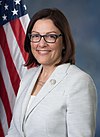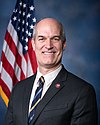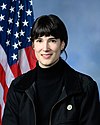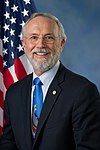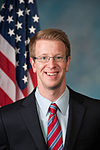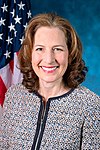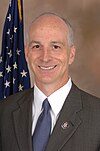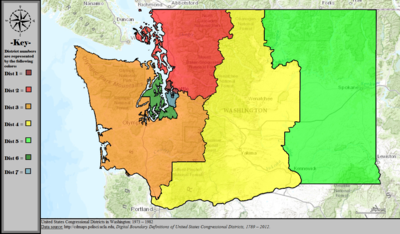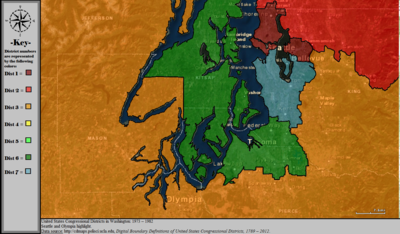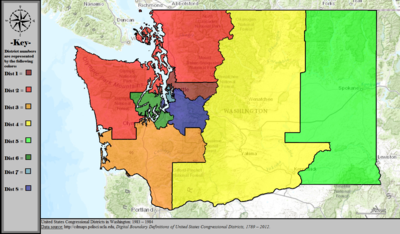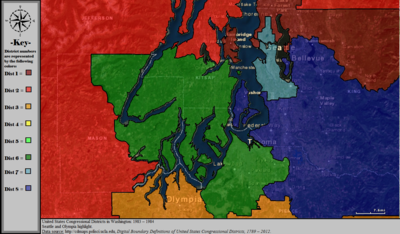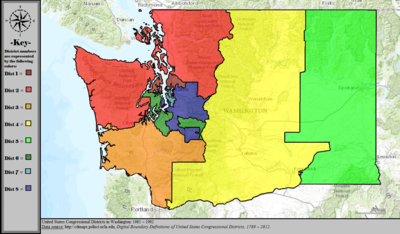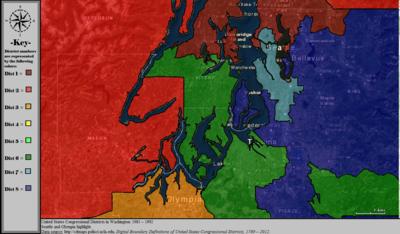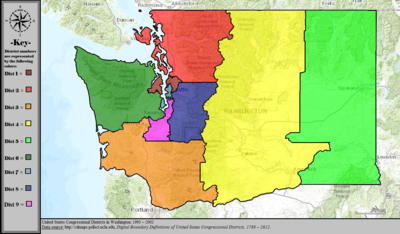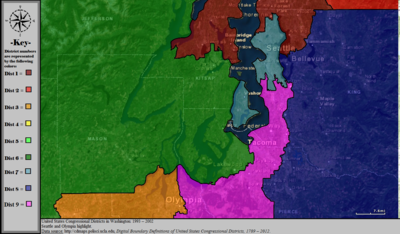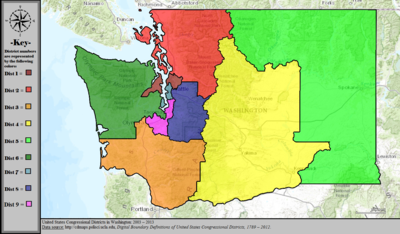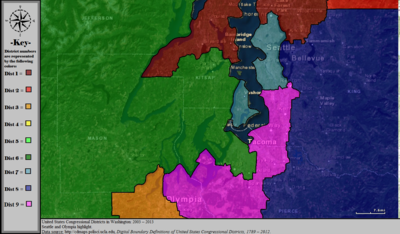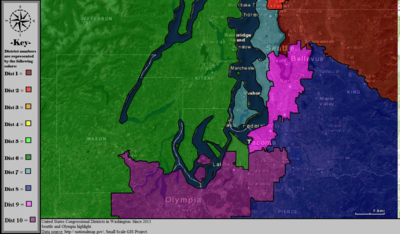Redistricting in the United States is the process of drawing electoral district boundaries. For the United States House of Representatives, and state legislatures, redistricting occurs after each decennial census.
Since Montana became a U.S. state in 1889, it has sent congressional delegations to the United States Senate and the United States House of Representatives. Each state elects two senators to serve for six years. Before the Seventeenth Amendment took effect in 1913, senators were elected by the Montana State Legislature. Members of the House of Representatives are elected to two-year terms, one from Montana's at-large congressional district. Before becoming a state, the Territory of Montana elected a non-voting delegate at-large to Congress from 1864 to 1889.
Congressional districts, also known as electoral districts in other nations, are divisions of a larger administrative region that represent the population of a region in the larger congressional body. Countries with congressional districts include the United States, the Philippines, and Japan.

There are currently nine United States congressional districts in Tennessee based on results from the 2020 United States census. There have been as few as eight and as many as thirteen congressional districts in Tennessee. The 13th district and the 12th district were lost after the 1840 census. The 11th district was lost after the 1850 census and the 10th district was last lost after the 1950 census. The 9th district was briefly lost after the 1970 census but was regained after the 1980 census.

Kentucky is currently divided into six congressional districts, each represented by a member of the United States House of Representatives. The number of congressional districts has been set at six since the 1990 redistricting cycle.

California is the most populous U.S. state; as a result, it has the most representation in the United States House of Representatives, with 52 Representatives. Each Representative represents one congressional district.

Wisconsin is currently divided into 8 congressional districts, each represented by a member of the United States House of Representatives. After the 2020 census, the number of Wisconsin's seats remained unchanged.

Florida is divided into 28 congressional districts, each represented by a member of the United States House of Representatives. After the 2020 census, the number of Florida's seats was increased from 27 to 28, due to the state's increase in population, and subsequent reapportionment in 2022.

Virginia is currently divided into 11 congressional districts, each represented by a member of the United States House of Representatives. The death of Rep. Donald McEachin on November 28, 2022, left the 4th congressional district seat empty. Following the results of a special election to fill his seat on February 21, 2023, Jennifer McClellan made history by becoming Virginia's first black congresswoman.

Arizona is divided into nine congressional districts, each represented by a member of the United States House of Representatives. Since the 2008 elections, Democrats and Republicans have alternated holding a majority of seats in the delegation in six of the last eight elections.
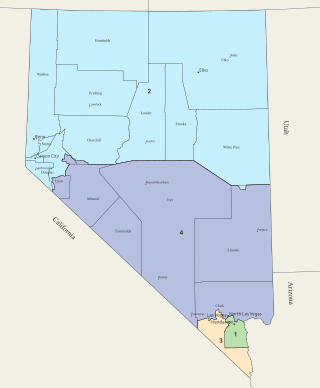
Nevada is divided into four congressional districts, each represented by a member of the United States House of Representatives. After the 2010 census, Nevada gained a fourth House seat.
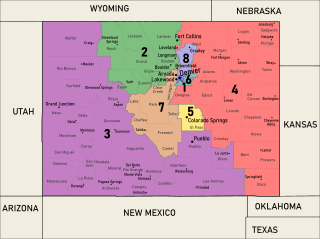
Colorado is divided into eight congressional districts, each represented by a member of the United States House of Representatives.

Utah is divided into 4 congressional districts, each represented by a member of the United States House of Representatives. After the 2010 census, Utah gained one House seat, and a new map was approved by the state legislature and signed into law by Governor Gary Herbert.

Iowa is divided into four congressional districts, each represented by a member of the United States House of Representatives. The state's congressional map is roughly divided by quadrants in the northeast, northwest, southeast, and southwest sections of Iowa.
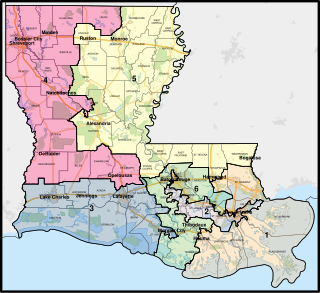
The U.S. state of Louisiana currently has six congressional districts. The state has had as many as eight districts; the eighth district was eliminated on January 9, 1993 after results of the 1990 census, and the seventh district was eliminated in 2013, following results of the 2010 census, largely because of people moving interstate after Hurricane Katrina hit the state.

The U.S. state of Arizona, in common with the other U.S. states, must redraw its congressional and legislative districts every ten years to reflect changes in the state and national populations. Redistricting normally follows the completion of the United States census, which is carried out by the federal government the first year of every decade; the most recent census took place in 2020. Historically, Arizona's legislature had control over the redistricting process. However, Proposition 106, passed in 2000, delegated the power to draw congressional and legislative boundaries to a bipartisan independent commission. The Arizona Independent Redistricting Commission (AIRC) comprises two Democrats, two Republicans, and one independent chair. County and local redistricting, which normally takes place along the same timeline as congressional and legislative redistricting, is carried out by the individual county and local governments rather than the AIRC.

The Washington State Redistricting Commission is a decennial body charged with redrawing congressional and legislative districts in the state of Washington after each census. On November 8, 1983, Washington state passed the 74th amendment to its constitution via Senate Joint Resolution 103 to permanently establish the Redistricting Commission. Earlier that year the first commission redrew the state's congressional map after the previous one drawn by the legislature was ruled unconstitutional. Since after the 1990 census, a committee of four appointees of the majority and minority leaders of the House and Senate appoint a fifth member as non-voting chair, and meet to redistributes representative seats according to census results.

Maryland is divided into eight congressional districts, each represented by a member of the United States House of Representatives. After the 2020 census, the number of Maryland's seats remained unchanged, giving evidence of stable population growth relative to the United States at large.

The 2020 United States redistricting cycle is in progress following the completion of the 2020 United States census. In all fifty states, various bodies are re-drawing state legislative districts. States that are apportioned more than one seat in the United States House of Representatives are also drawing new districts for that legislative body.
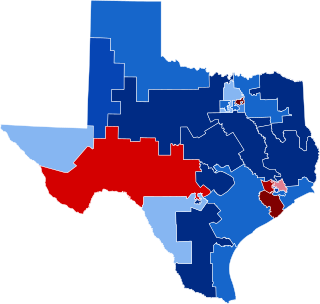
The 1982 United States House of Representatives elections in Texas occurred on November 2, 1982, to elect the members of the state of Texas's delegation to the United States House of Representatives. Texas had twenty-seven seats in the House, up three from the 1970s, apportioned according to the 1980 United States census.

